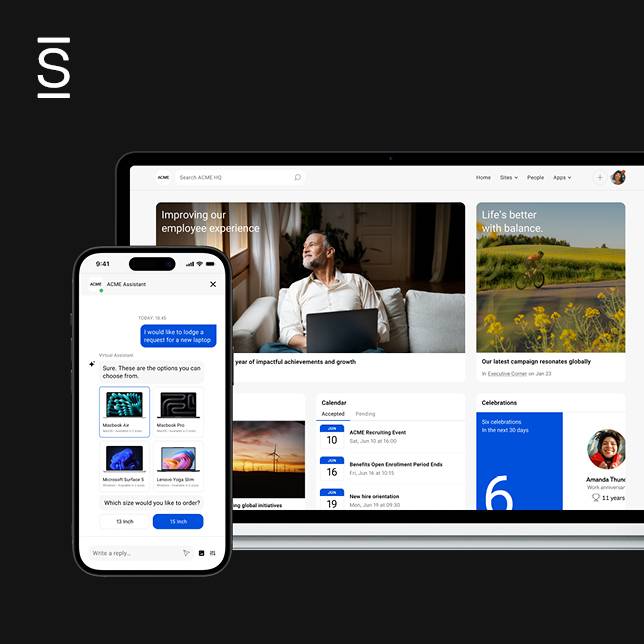- 1 What is a Chief Experience Officer? CXO meaning explained
- 2 CXO’s job requirements and responsibilities
- 3 The importance of the role
- 4 What a CXO does
- 5 What is customer experience management?
- 6 How the CXO improves CXM
- 7 Challenges of the chief experience officer role
- 8 The evolution of a chief experience officer
- 9 CXO vs. CMO
- 10 Chief experience officer experience and skills
- 11 Conclusion
What is a Chief Experience Officer? CXO meaning explained
Organizations want to provide a good experience to everyone they come into contact with. This includes customers, employees, partners, suppliers, and contractors. This is how the role of the Chief Experience Officer (CXO) has become necessary for many organizations.
According to Gartner, approximately 90 percent of organizations had a CXO or CXO equivalent in 2020. Just three years prior, in 2017, more than 35 percent of companies hadn’t created the role. As more organizations realize the importance and difficulty of creating compelling user journeys, they bring in the CXO.
CXO’s job requirements and responsibilities
A Chief Experience Officer is an executive charged with creating a better experience for the organization’s customers, employees, partners, suppliers, and contractors. The CXO links the company and the stakeholders, aligning strategic goals to these relations.
According to Indeed, the CXO has five critical roles in the organization:
- The CXO is the catalyst for an experience-centered organizational culture. The executive pushes for making the experiences of stakeholders a priority for the business.
- The CXO is the champion of the stakeholders, presenting their wants and needs to the leadership and following through to make sure plans are implemented.
- The CXO guides the procurement of equipment and knowledge necessary to accomplish the organization’s goals for stakeholder experience.
- The CXO is the architect for the structures that enable an improved experience for the stakeholders. This includes heading programs such as the employee experience management program.
- The CXO leads the implementation of various planned initiatives aligning different business components with the experience of its stakeholders.
To perform these roles, the CXO has a unique ability to understand human behavior and cater to desires. They are well-versed in what makes a good experience for the general population, and they can use that knowledge and experience to create personalized experiences for individual stakeholders.

Thus, while the role is relatively new, companies are keen to hire people with vast experience. Before becoming executives, future CXOs typically hold positions in Marketing and Customer Experience departments. Aspiring CXOs must use their positions to develop creative thinking and interpersonal relationships.
They must also have a solid educational background with at least a Bachelor’s. Ideally, CXOs have a Master’s in Business Administration, Marketing, or Public Relations.
Finally, CXOs have highly developed problem-solving skills necessary to resolve emerging issues such as interpersonal conflicts between employees, rising tensions among partners, or incendiary posts by customers on social media.
The importance of the role
A CXO is a necessary addition to the C-suite, not least because of their unique abilities mentioned above. While it is a niche role that may easily be spread around rather than dedicated to one executive, the CXO is necessary to relieve other departments of the crucial responsibility of providing and maintaining high standards of stakeholder experience.
Hiring a CXO can make the organization more customer centric.
Customer-centric organizations inspire customer loyalty and experience a higher customer lifetime value. Without a champion for a customer-centric model at the top, many organizations are trapped in a product-first mindset. This is why, according to Forrester, more than three-quarters of executives have prioritized CX.
The CXO helps optimize the value addition to the customer. They understand what “value” means to the customer, they are privy to the organization’s strategic focus and hence can ensure the organization’s resources are well-distributed. Ultimately, the company can provide more value without sacrificing other goals, such as more revenue and market share.
It’s now clear that aligned, engaged, and satisfied employees are more productive. The CXO is responsible for providing an engaging work environment to all employees, including desked, deskless, and hybrid workers.

The CXO can be responsible for the effective governance of the employee experience platform: Ensuring workers have access to relevant information, sharing internal messages in a timely fashion, and analyzing AI-generated prescriptive analytics for better performance.
The organization can create a more positive work environment with insight into employee needs and preferences. The CXO can help design an employee advocacy program that channels some of that positive energy into lead generation, talent acquisition, and lower employee turnover.
Having a CXO on the team during transitions can also significantly contribute to change management. Guiding the organization into a more desirable state is a delicate process, whether implementing digital transformation, absorbing a smaller firm, or overhauling the company culture. The CXO is the much-needed lever to maintaining organizational cohesiveness during such changes.
What a CXO does
The responsibilities of a CXO cut across many aspects of the organization and touch nearly every department. Compiled from the requirements of companies hiring for the role and the job descriptions given by leading professional sites such as Indeed, the following are the main responsibilities of a CXO:
Promoting collaboration across the organization.
It starts with the CXO interacting and collaborating with fellow executives. Typically, the CXO reports to the CEO, COO, or CMO. The CXO should also work closely with the CTO, as technology is a significant part of improving stakeholder experience and maintain contact with the CFO to ensure better use of finances.
Defining the value proposition of the product or service.
The CXO understands customer needs and can communicate the product’s value proposition more effectively than other executives. Additionally, they have contact with the customer and can quickly find problems and course-correct before they escalate.
Developing the customer journey map.
The CXO uses their data to optimize the customer lifecycle from brand awareness to contact, transaction, retention, and advocacy. Given the high customer acquisition costs, organizations are better off investing in a personalized customer experience, which is pricey but not as costly as customer churn.
Directly interactions with customers.
To understand the customer, the CXO must be in close contact with them through surveys, interviews, focus groups, and social platforms. This also involves gathering data from various employees and departments about customer interactions. Customer service call transcripts, marketing metrics, and POS data are all crucial in building strong customer relationships.
Supporting employee development.
The CXO is also a champion for the employee’s professional development as this is one of the many contributors to employee engagement. Charged with improving the employee experience and satisfaction, the CXO uses their influence with the decision-makers to ensure professional development initiatives are implemented to the maximum benefit of the workforce.
Measuring the success of the experience program.
The CXO is responsible and accountable for the overall stakeholder experience. Thus, they also measure the key performance indicators and regularly review the content, practices, and processes of the stakeholder experience. The goal is to keep up with the stakeholders’ changing needs, wants, and expectations and adjust the program to match that.

What is customer experience management?
Customer experience management (CEM or CXM, in short) is the use of strategies and technologies to maximize customer engagement, experience, and satisfaction. It improves on traditional customer relationship management (CRM), using better technologies, advanced techniques, and a more customer-centric approach.
How the CXO improves CXM
CXM is more than being on good terms with customers, which is the focus of CRM. CXM can be viewed as a more “genuine” version of CRM: Instead of doing things to keep the faith and goodwill of customers, it focuses on providing a great experience and this is what leads to better relations.
There are many ways through which the CXO can improve CXM, including:
- Achieving a deeper understanding of the customer. Dedicated to experience management, digging deep into customer behaviors and preferences is part of the CXO’s day job. This allows them to get a more detailed view of the customer base and potential market to provide personalized customer experiences and insight for Marketing to drive more conversions.
- Boosting customer loyalty and retention. The CXO can use advanced tools and techniques to understand what appeals to customers and reach them where they are, at the right time, and through proper channels. Additionally, regular interaction promotes high-quality, longer-lasting relationships.
- Maintaining a competitive edge. Having a CXO gives you an edge over competitors that are yet to figure it out. The CXO can provide a unique perspective on customer experience insights which may lead to improved operational performance. Additionally, their knowledge can help improve the success rate when converting leads and lower customer acquisition costs.
- Measuring the success of CXM. The CXO obtains data from a range of sources, internal and external, and analyzes it to get the full picture of the performance of CXM initiatives. They can share this information with other executives and significantly contribute to various strategic decisions, such as acquiring new CXM tools.
Challenges of the chief experience officer role
While most companies have seen the potential benefits and created the CXO position, many are still not bought in. Some challenges come up with the role, and it has been criticized on the basis of being a niche position.
The New York Times has categorized it among “unconventional” and “wacky” titles. The Wharton Business School says the C-suite is experiencing “Title Inflation” with positions like the CXO being created. And futurists have warned of the danger of “job title invention”.
Decision-makers need to be careful about creating new roles. It may result in overlapping responsibility due to unclear territory lines, clashes among executives when there is no clear chain of command, and hemorrhage of organizational resources.
That said, a title is as “wacky” as the role it serves. If the role is well-defined and the decision-makers have determined that there needs to be someone in charge, then it doesn’t matter what you call the person in charge.
For organizations that can look past the criticism and see the bigger picture, there is still a challenge to contend with, namely the risk of becoming too focused or attached to the metrics rather than the story they tell about the level of customer experience.
The fix for this is easy: Judge the efforts by the performance. This means defining performance metrics which doesn’t have to start and stop with the revenue but certainly need to include value metrics only and eliminate vanity metrics.

The evolution of a chief experience officer
The growth of the CXO role indicates that organizations are increasingly adopting a customer-centric culture. The modern CXO might have been a Chief Customer Officer not too long ago. But the organization has realized the scope of CX is beyond the CCO’s pay grade.
This is especially true when it comes to improving the experience of internal customers, e.g., employees and suppliers. The same can be said of the relationship between the CXO and the Chief Marketing Officer.
CXO vs. CMO
As organizations become more customer-focused, marketing is taking the backseat in favor of CX. Thus, many organizations are replacing the CMO with the CXO while others retain both positions.
In companies with both, the CMO role is crucial in understanding market position, implementing marketing campaigns, and developing branding strategies. On the other hand, the CXO is charged with driving the CX strategy.
When no CXO exists, CMOs must have the right skill set to drive the organization’s CX strategies. Given that the CXO is also charged with the experience of all stakeholders in addition to the customers, many organizations find it more efficient to replace the CMO.
Chief experience officer experience and skills
In many cases, replacing a CMO is simply a promotion/change of title rather than firing and hiring. It’s important to know what to look for, whether you’re promoting from within or hiring from outside.
Effective CXOs have at least 10 years of experience in communications and customer-facing roles. These include sales, marketing, project management, public relations, customer service, and executive positions. Working in these positions promotes people skills that are useful in the CXO role.
Communication skills are a must-have for the CXO. They will need them to pass along information, educate, and gather insights.
With the spectrum of responsibilities, the CXO must be able to multitask. Improving the experience of different stakeholders may sometimes require different strategies and projects running simultaneously.
Creative thinking is another important skill for a CXO. Most of today’s problems require creative thinking, and the CXO must take an imaginative approach rather than going by the book.
While the CXM or EXM platform may collect and analyze data automatically, it is still necessary for the CXO to have data analysis skills to do the crucial bit that machines leave to human analysts, i.e., interpreting the data for insights.
Conclusion
A careful analysis of the needs of the modern organization will quickly reveal a gap that can only be filled by the CXO or CXO equivalent. The responsibilities, skills, and other abilities of the CXO make many decision-makers take a pause from the criticism and challenges to see what the position could mean for the organization: A more beloved brand by customers, a more desirable place to work, a more dependable business partner, etc.
Hence, what’s not to love about becoming a CXO? With nine out of 10 companies employing a CXO, the industry has effectively welcomed people to study, gain experience, and apply for the CXO role.
Simpplr is the leading AI-powered employee experience platform helping CXOs worldwide do their jobs by focusing on what matters. The platform provides a collaborative environment with effective communication channels and instant access to relevant information.
With powerful data collection and analysis capabilities, reporting features, and prescriptive analytics to inform action, Simpplr leaves little room for error. Get in touch now to learn how to use it for better experiences around the organization.

Watch a 5-minute demo
See how the Simpplr employee experience platform connects, engages and empowers your workforce.
- #1 Leader in the Gartner Magic Quadrant™
- 90%+ Employee adoption rate






